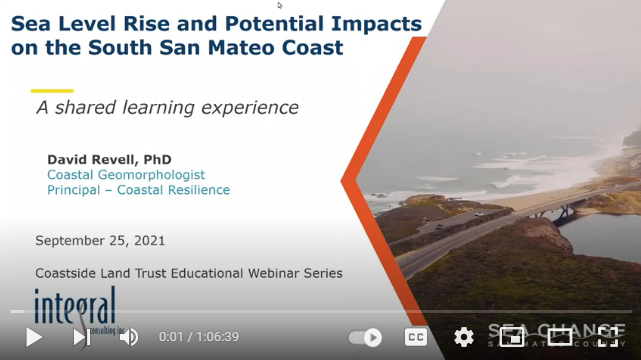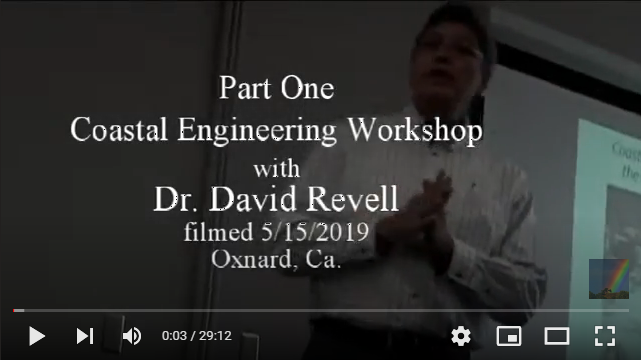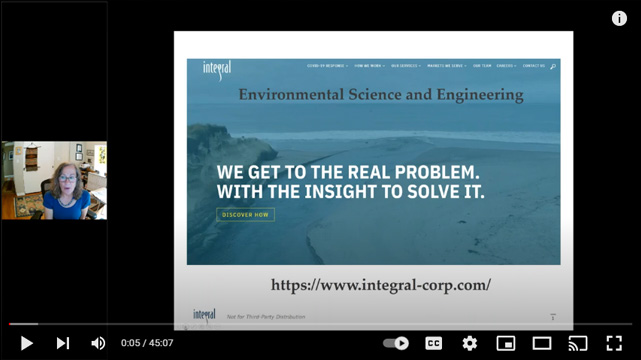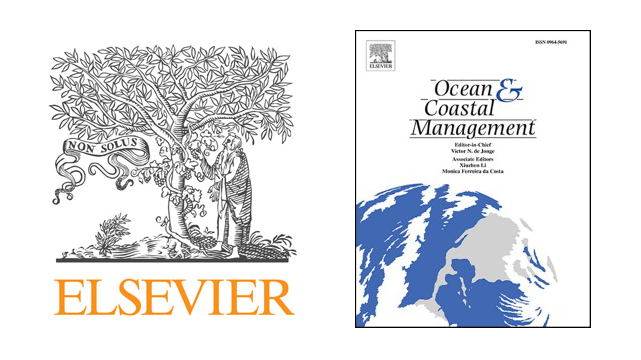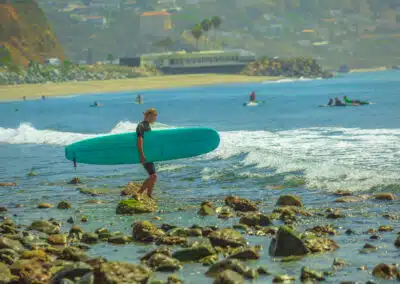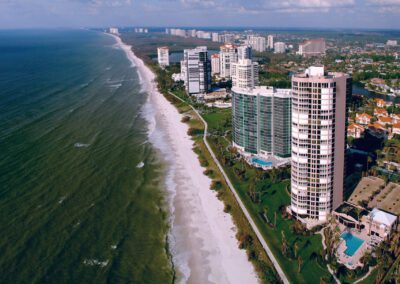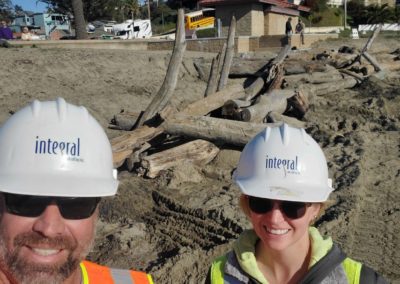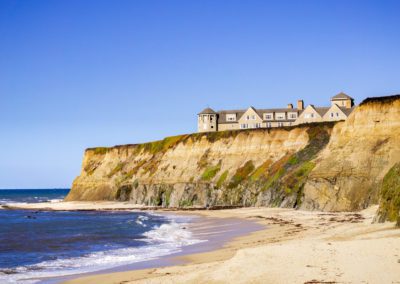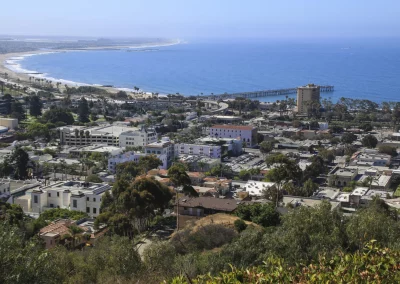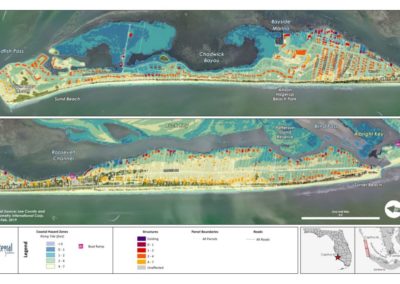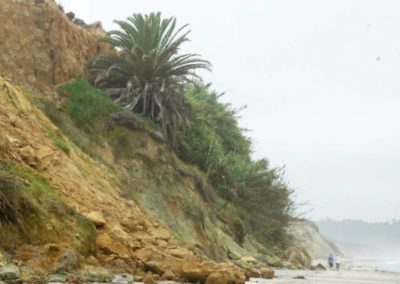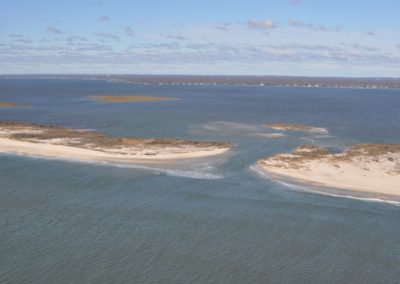Coastal Climate Risk & Resilience
Integral Consulting identifies science-based solutions to coastal-related challenges by taking a holistic, systems approach to understanding the risks posed by physical processes to social, economic, and ecological aspects of coastal communities and facilities. We evaluate the costs, benefits, and trade-offs among different adaptation approaches, leading to sustainable community planning and resource management.
Our team’s portfolio of scientific expertise—geology, oceanography, modeling, geomorphology, ecology, and economics—allows us to unravel the complex processes that make communities and facilities vulnerable to coastal change. We understand how to measure, analyze, and explain the interactive processes driving change today, and we have the tools to project how the interactions will evolve in the future.
Coastal Vulnerability and Risk Assessment | Coastal Adaptation Planning | Nature Based Solutions | Coastal Site Characterization and Assessment | Coastal Facilities/Economics | Post-event Assessment and Resilience Planning | Estuary Management | Regional Sediment Management | Coastal Hazard Modeling
Coastal Vulnerability and Risk Assessment
Communities and facilities along our nation’s coastlines are perpetually at risk due to a complex interplay of processes that drive coastal change. Integral is a leader in developing cutting-edge approaches to assess vulnerability and risk, communicating the information, and engaging with local stakeholders. Our approach is to carefully identify the vulnerabilities of various infrastructure components or natural resources that stem from exposure to different physical processes and from coastal hazards related to critical location and elevation details. Risk is determined by what physical processes may cause the vulnerability and the associated consequence of any damages.
Coastal Adaptation Planning
Integral is a preeminent innovator in guiding communities and facilities through the complex adaptation planning process. The purpose of adaptation planning is to develop pathways to minimize the inevitable impacts of sea level rise on property, infrastructure, and critical ecosystems. Our customizable decision-support framework toolkit, Coastal ADAPT (Adaptation Decision And Planning Toolkit), is implemented in phases, first providing the critical baseline information for selecting appropriate adaptation strategies, and then modeling their implementation to evaluate potential secondary impacts and unintended consequences. As part of this framework, we carefully and clearly lay out the trade-offs and secondary consequences of each strategy to support effective decision-making. Results of this approach are applied to evaluate cost-effectiveness of different strategies and identify when it makes sense to transition from one adaptation strategy to another.
Nature Based Solutions
Nature-based or living shoreline solutions applied to coastal vulnerability work and can provide important benefits for humans, ecosystems, and biodiversity. Specifically, they may involve softer adaptation approaches such as creation of dunes, wetlands, or marshes instead of structural engineering approaches such as revetments and seawalls. We are skilled in evaluating nature-based solutions beginning with a detailed understanding of coastal processes and geomorphology—we can evaluate the historical conditions, consider what processes and natural materials are present, and identify feasible nature-based solutions viewed through the lens of climate change, with the full engagement of local stakeholders. Our experience spans projects with nature-based and green infrastructure components, including beaches, dunes, cobbles, increased elevations, and ecosystem restoration. These solutions can limit erosion and mitigate impacts from storms and sea level rise, while providing space for recreation, habitat for native species, and reduced maintenance costs.
Coastal Site Characterization and Assessment
Our site characterization and assessment services are adapted to suit client and project needs. Our team will tailor the assessment to best characterize and understand key processes that need to be addressed to improve resilience. An initial assessment can include geomorphic, habitat, and physical process evaluations that identify areas for more detailed investigation. Additional evaluation may include geologic framework, shoreline change, sediment budget, ecological feedbacks, or fiscal impact and economic analyses. Site assessments may also include coastal hazard modeling to evaluate the potential risks and identify key processes driving site vulnerability. Depending on the needs of the project and client, the site characterization and assessment services will be selected to best support an understanding of key processes and develop a conceptual understanding of the system holistically.
Coastal Economics
Economic analyses are critical to supporting decision-making about coastal resilience and are used throughout our practice. In vulnerability assessments we integrate physical damages and economic information to quantify market and non-market impacts on coastal assets. In adaptation assessments, we consider the tradeoffs between the business-as-usual or baseline situation and various adaptation approaches over time. These analyses can include both physical impacts on built and natural assets, and the fiscal impacts for asset managers and local communities, such as reduced tourism and property tax revenues.
Our economists are skilled in performing economic analyses in areas that require the incorporation of sea level rise and climate change risks. We help clients understand the magnitude and timing of risks, to what extent adaptation strategies are cost effective in avoiding or minimizing these risks, and the optimal timing and scope of interventions. These may include a cost–benefit analysis to understand the overall costs of each potential adaptation option, in comparison to the baseline costs of potential damages to infrastructure and natural resources, and other indirect costs such as the loss of recreational opportunities.
Post-event Assessment and Resilience Planning
The best planning in the world won’t stop the storm from coming. Numerous pre-storm mitigation efforts can be implemented, but once a storm arrives, some impact is inevitable. Integral staff have years of expertise in evaluating event impacts to coastal systems and in working directly with clients to develop solutions to increase resilience, accelerate recovery, and mitigate future impacts. Thorough and robust damage evaluation allows for proactive disaster preparation, including understanding what may be required for recovery and insurance claims.
Estuary Management
Estuaries are complex, highly productive ecosystems that occur where freshwater rivers meet and mix with the saltwater ocean. Many of them have been altered or highly constrained by human activities. Rising sea levels threaten to degrade estuaries by altering processes, moving shorelines, changing the duration and elevation of flooding, and affecting critical habitat.
The decisions coastal communities or facilities make about when and where to build protective structures will have a significant impact on the future health of estuary habitats. Our coastal scientists help clients develop management approaches and prioritization schemes to conserve and restore estuaries and their ecological values.
Regional Sediment Management
Sediment is nature’s adaptation resource—fine-grained sediment is crucial for wetland and offshore mudbelt habitats, while sand is crucial for our beaches and dunes. For more than two decades, Integral has applied innovative approaches to the regional assessment and management of sediment to improve coastal resilience. Regional sediment management considers the sources and sinks of sediment and the opportunistic use of sediment to maximize the benefits.
Our expertise spans characterization, conceptual site model development, risk assessment, natural resource damage assessment, remedial alternatives analysis, baseline and long-term monitoring, and restoration design and construction. We also leverage state-of-the-art monitoring technologies to gather data to calibrate models. Our multidisciplinary and science-first focus links seamlessly with the remedial engineering team for cost-effective and sustainable approaches.
Coastal Hazard Modeling
Accurate coastal hazard modeling is critical to understanding coastal resilience and providing clients with assessments of risk and vulnerability. Coastal hazard modeling can be used to evaluate how coastal hazards (coastal flooding, tidal and storm surge inundation, coastal cliff and dune erosion, groundwater intrusion, and compound flooding at river mouths and estuaries) will change over time with sea level rise and how the hazards will impact the assets and resources of coastal communities and facilities.
Our modeling team routinely develops state-of-the-science hydrodynamic and morphodynamic models and we have successfully completed modeling projects worldwide in aquatic systems ranging from riverine, lacustrine, and estuarine environments to coastal waters and the deep ocean. We use state-of-the-art models including DELFT3D, SWAN, WWIII, and XBeach to provide accurate and site-specific conditions based on the client and project needs. These well-validated models can be used to address a range of client and project questions on topics ranging from site characterization and hazard evaluation to evaluating proposed adaptation strategies over time.
GET IN TOUCH WITH A TECHNICAL PROFESSIONAL
This form goes to a real human who can put you in touch with the correct technical professional for your needs.

